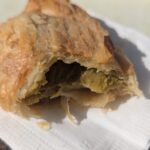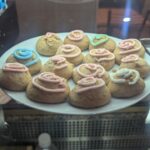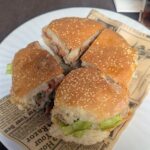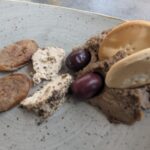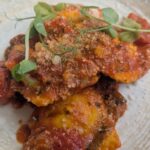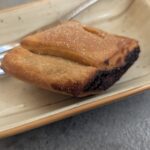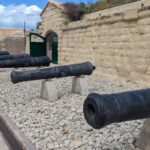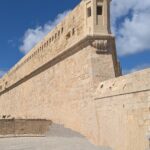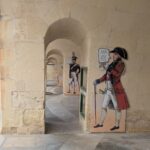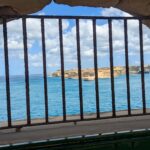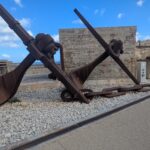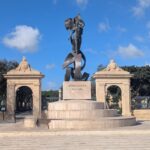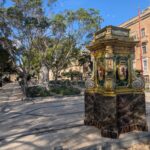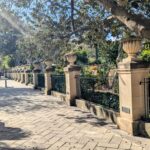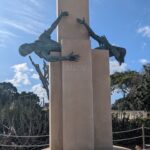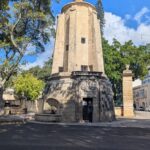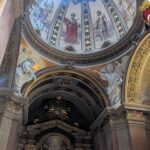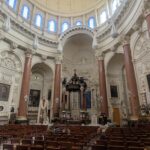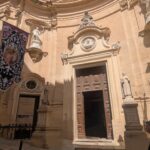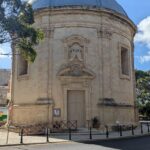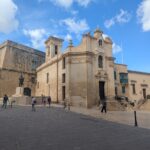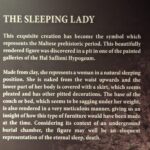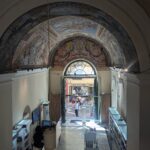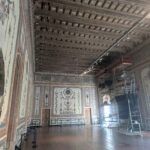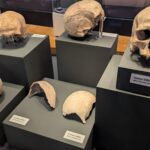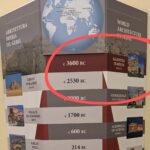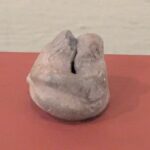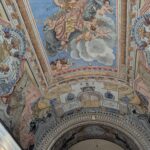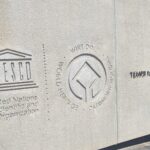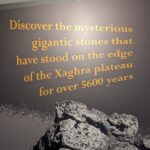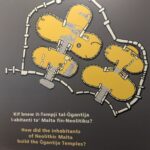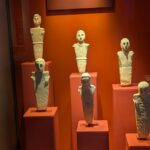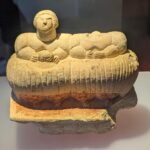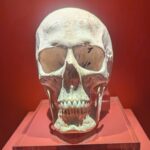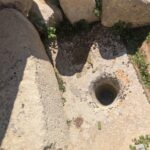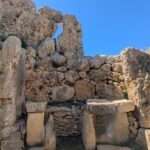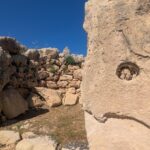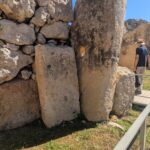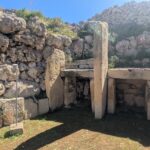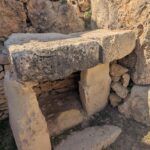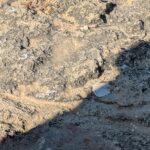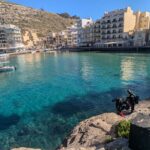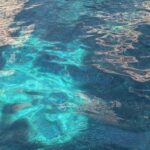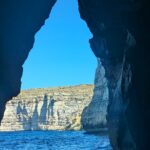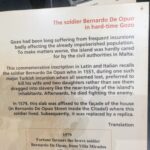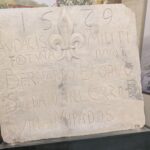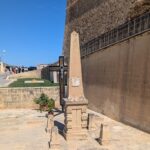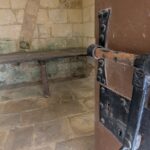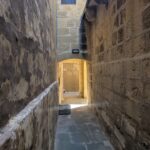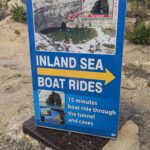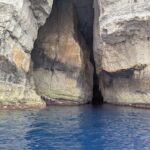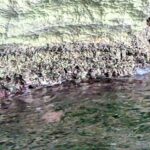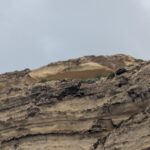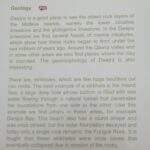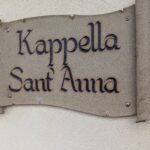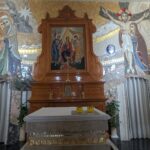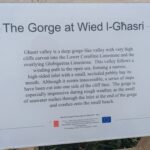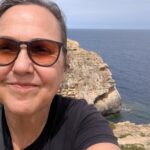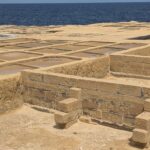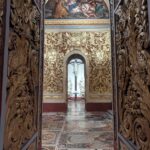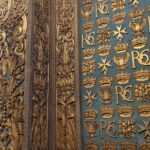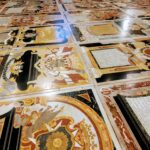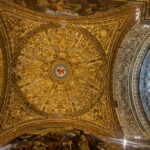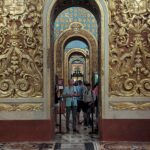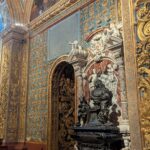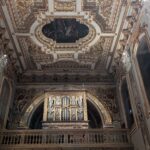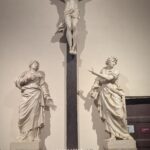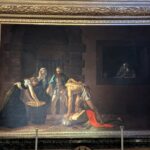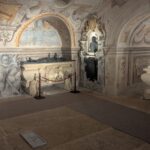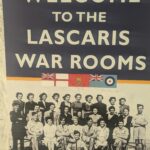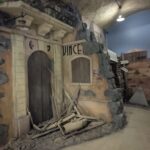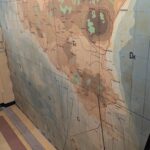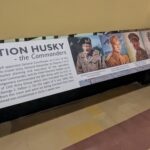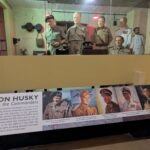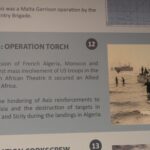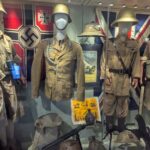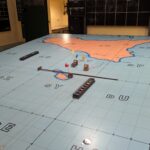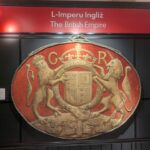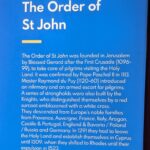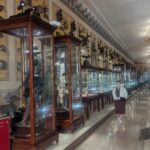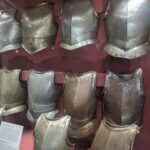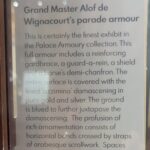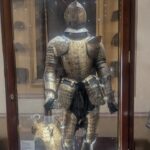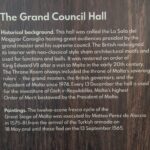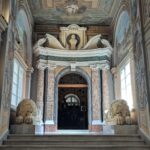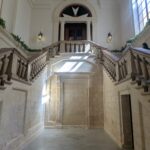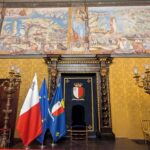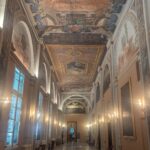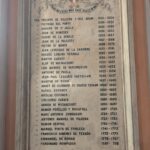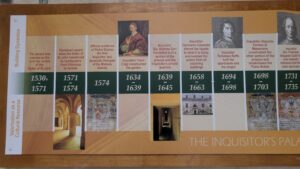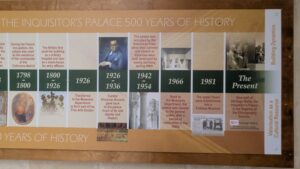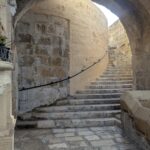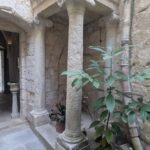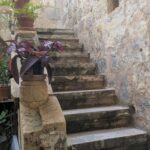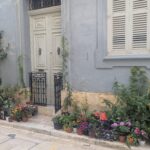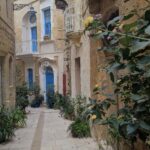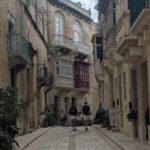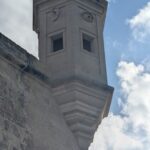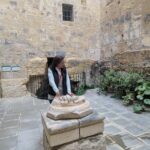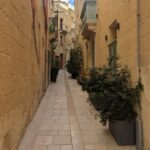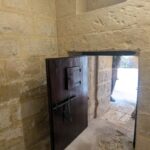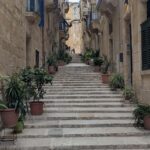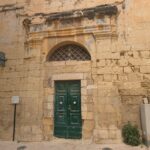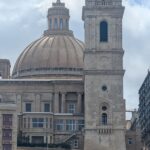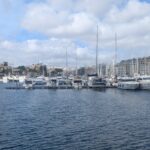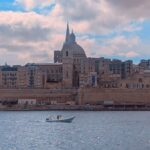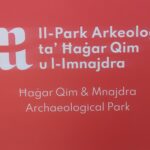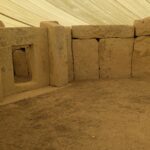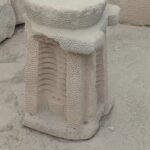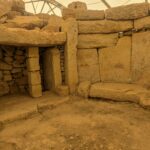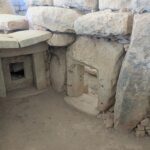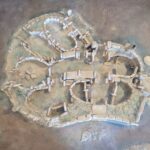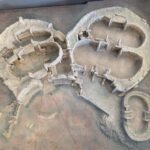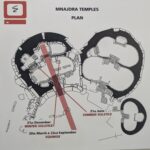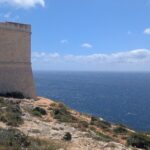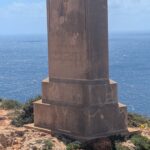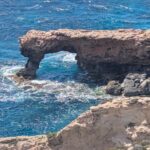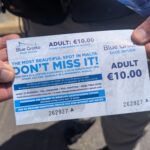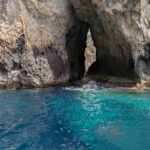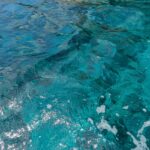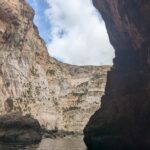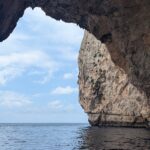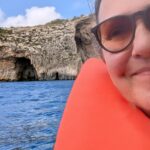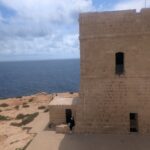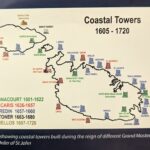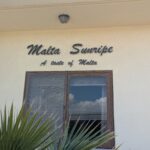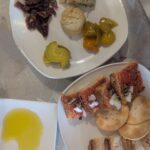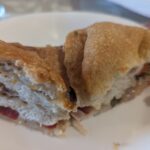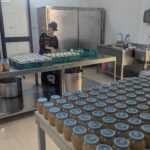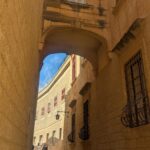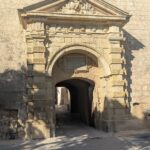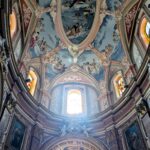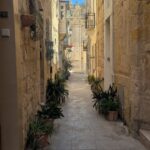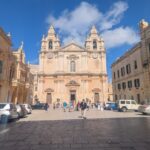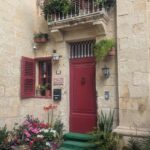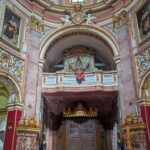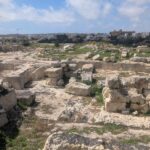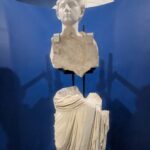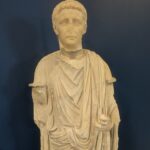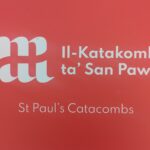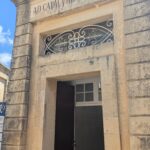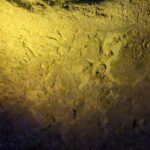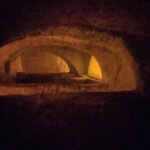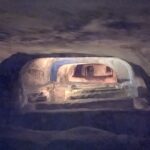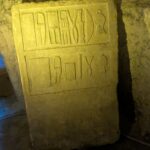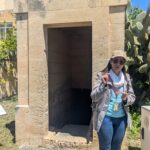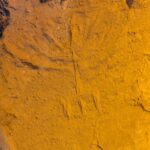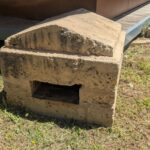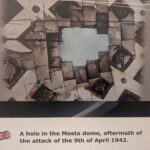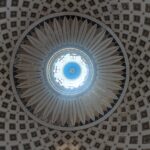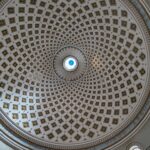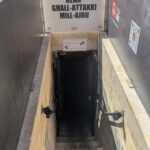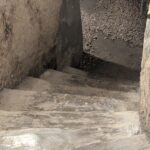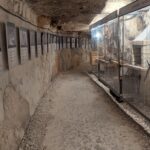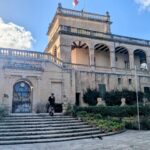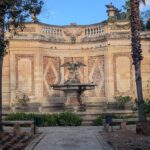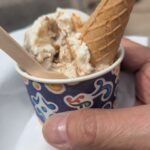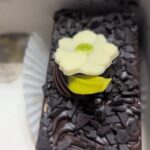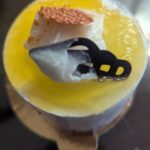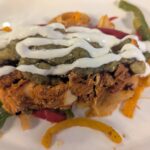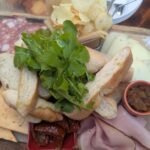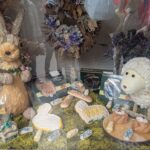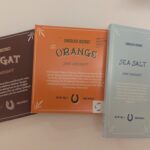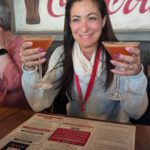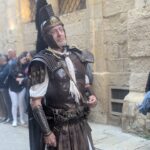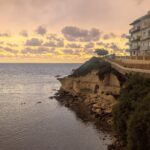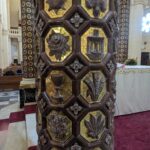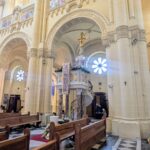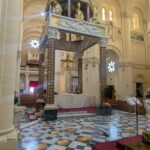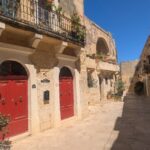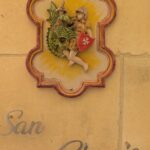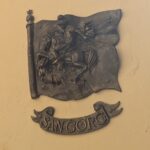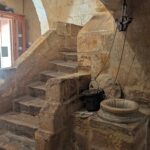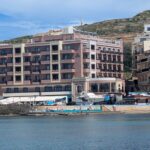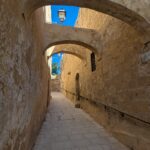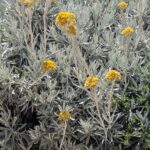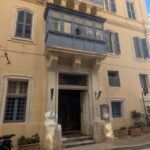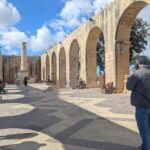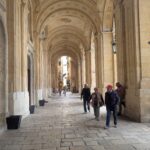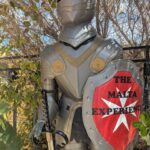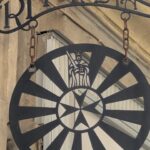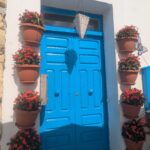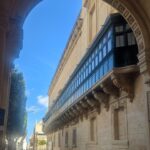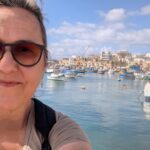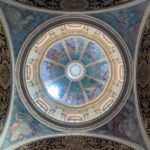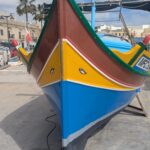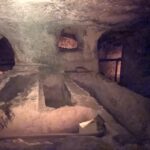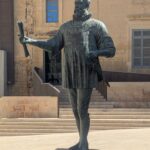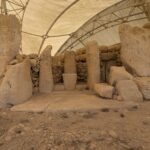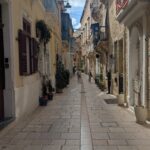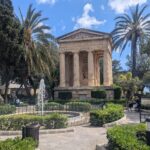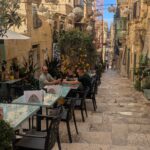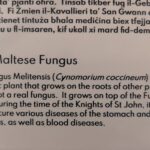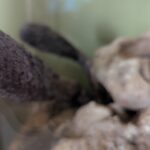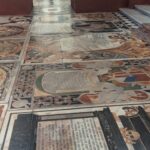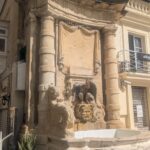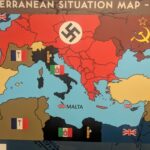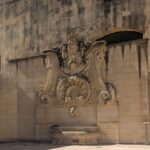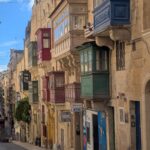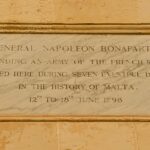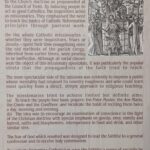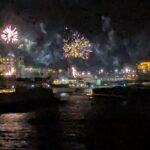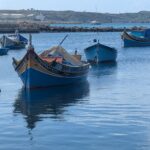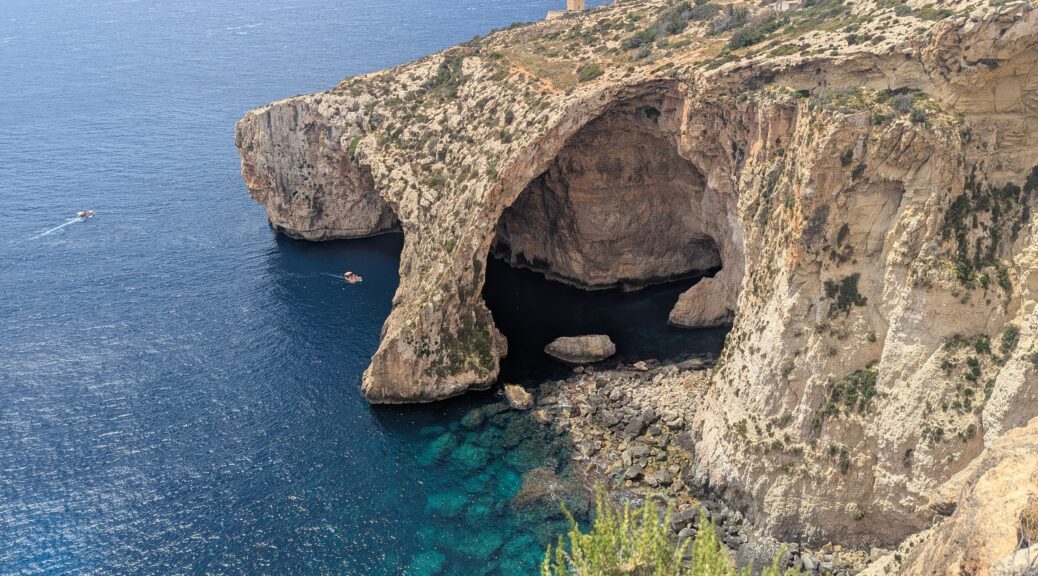
Malta
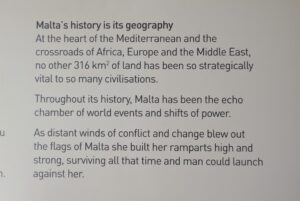 I’ve been wanting to visit Malta for years. There is so much amazing history here, in the Crossroads of the Mediterranean. Early settlements date back to 5900 BCE.
I’ve been wanting to visit Malta for years. There is so much amazing history here, in the Crossroads of the Mediterranean. Early settlements date back to 5900 BCE.
I looked at just visiting Valletta, but wanted to see more of both islands so found a package, a guided small group tour “Malta and Gozo Discovery”, via Explore.
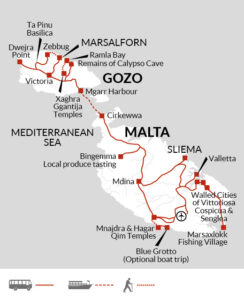
We spent five nights on Malta in Sliema, but didn’t have a lot of free time in Valletta and there was more I wanted to see. In addition, the flights from Faro to Valletta all landed quite late and I would have missed the transfers so I flew over 3 nights early and booked a hotel in Old Town. The Castille Hotel was a great location but the room was quite uncomfortable, don’t really recommend.
Valletta
I booked the Valletta Street Food and Cultural Walking Tour with Get Your Guide for my first morning. I met the guide in front of Parliament. It was a lovely morning with Nadina. Lots of food, lots of culture.
- Decanter by Accademia: A dried pea and phyllo savory pastizz.
- Cafe Micallef: Maltese coffee (coffee, chicory, cloves, aniseed liquor) and an almond cookie.
- That’s Amore: ftira, the local bread, with fresh tuna and tomatoes and capers, plus a glass of Kinnie, the local soda made from bitter oranges.
- Mercantile Rooftop Restaurant: appetizers of local goat cheese and sausage and a broad bean dip then ravioli with ricotta. I had my first taste of a local Cisk beer, too. They served us a small pastry with figs.
We visited Republic Street and Republic Square, the old opera house, destroyed during WWII, and Pjazza Jean Parisot de la Valletta with his statue. He was the founder of Valletta. We saw St. John’s Co-Cathedral and heard a little about its construction, Upper Barrakka Gardens, and much more.
That afternoon I walked over to Fort Saint Elmo and the National War Museum. I bought a combination ticket to the Malta Experience. It’s a good overview, 7000 years of the history of the island in just 45 minutes.
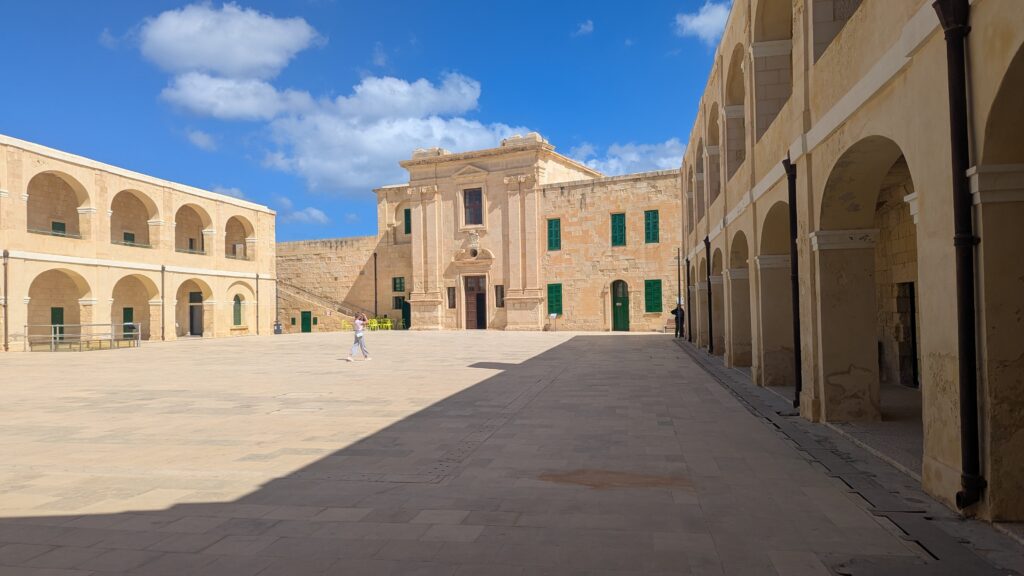
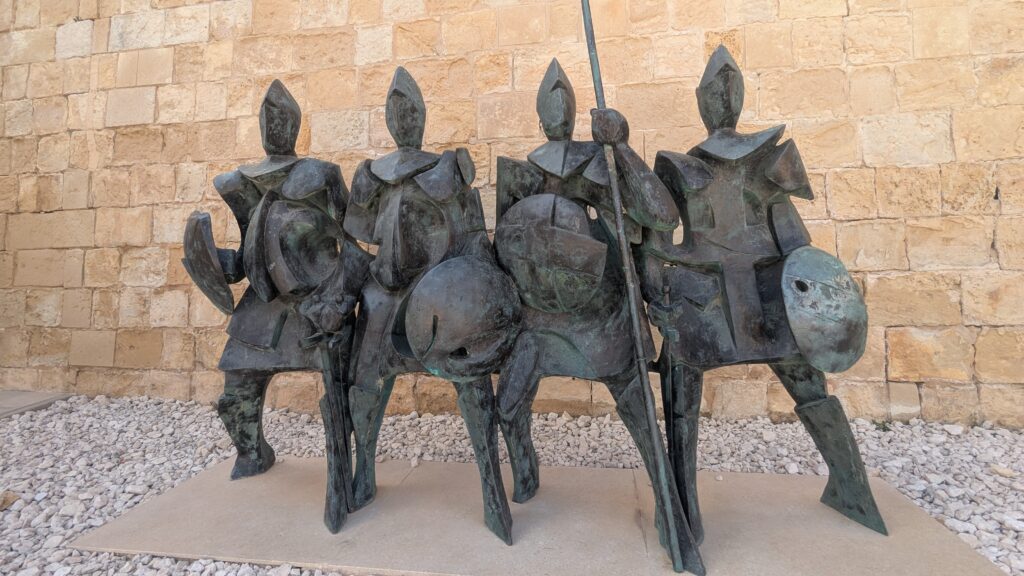
After the Malta Experience show, I went back over to the fort. A great location on the far eastern tip of Old Town, I spent about an hour and a half here. Great views of the harbor, interesting history. The site has been in use since around 1417 to fight the Ottomans, the initial fort was built in 1551.

I went back up town to see more of the Upper Barrakka Gardens. I took the elevator down to the harbor. I visited the Victoria Gate and enjoyed lower town before returning to my hotel.
The next day was Good Friday and practically everything was closed.
- I walked through the walls, into Floriana, to see Triton Fountain.
- I continued to the Mall Gardens, seeing the Independence Statue. I walked the entire length of this lovely green space.
- I also saw the Wignacourt Water Tower.
- I visited the Argotti Botanic Garden. The ANZAC statue in the park is interesting: “They shall not grow old as we that are left grow old. Age shall not weary them, nor the years condemn. At the going down of the sun, and in the morning, we will remember them.”
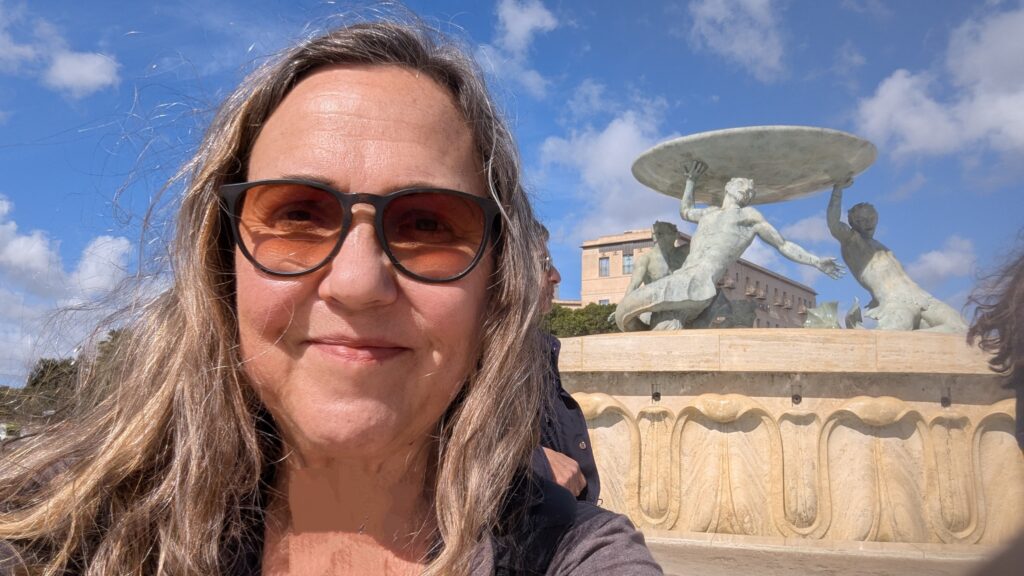
I headed back to Old Town in search of churches. On the way, I saw the interesting Sarria Church; a great building from 1676 but it was closed. Knisja ta ‘San Publiju (Saint Publius) was open and beautiful.
In Old Town, I saw many more churches:
- Church of Our Lady of Victory (Knisja tal-Vittorja), the oldest church and building in Valletta. Built in 1566 to commemorate the victory of the Knights of the Order of St John over the Ottomans.
- Our Lady of Mount Carmel or Bażilika Santwarju tal-Madonna tal-Karmnu
- There is also a small prayer room just around the corner, Oratorju tal-Fratellanza tal-Madonna tal-Karmnu, that had a very ornate Easter display
- St. Paul’s Pro-Cathedral is a Church of England or Anglican Church, dedicated in 1844. I learned a “pro-cathedral” is a church with cathedral status but it is not the “main” cathedral in the diocese.
- The Basilica of Saint Dominic & Porto Salvo
- The Knisja ta’ San Franġisk ta’ Assisi (St. Francis of Assisi)
- St. Barbara
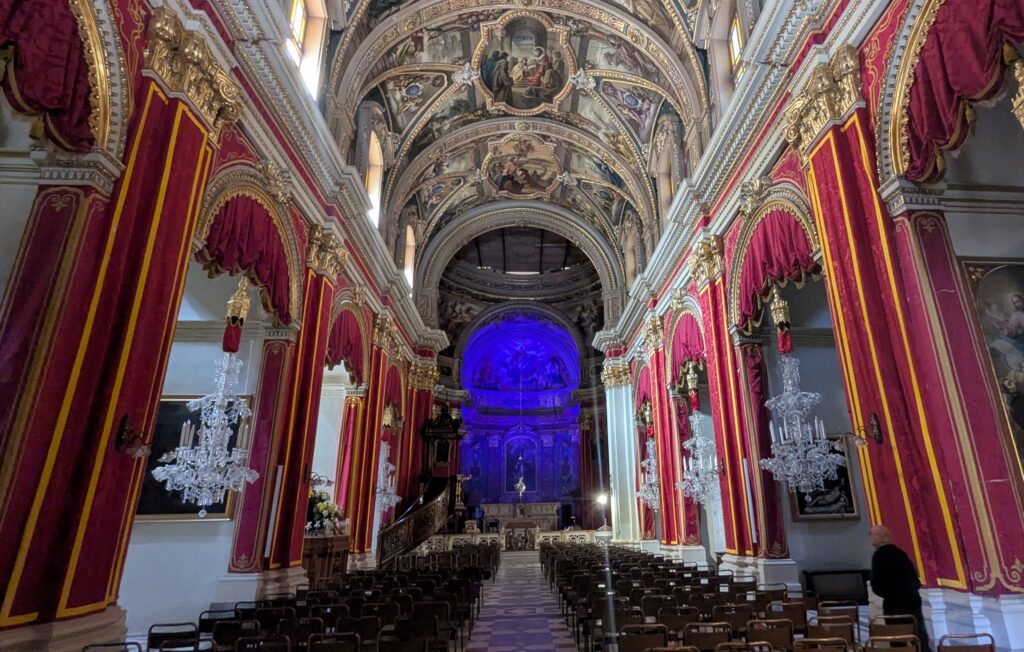
That evening I fought the crowds and got a space just down the street from Knisja Ta’ Giezu, or the Church of Giezu where the Good Friday procession started. Starting at 1800, I stayed for about 90 minutes, or for a majority of the procession to exit the church. I tried to get to a restaurant for dinner but with the procession and road closures, I ended up just going back to the hotel.
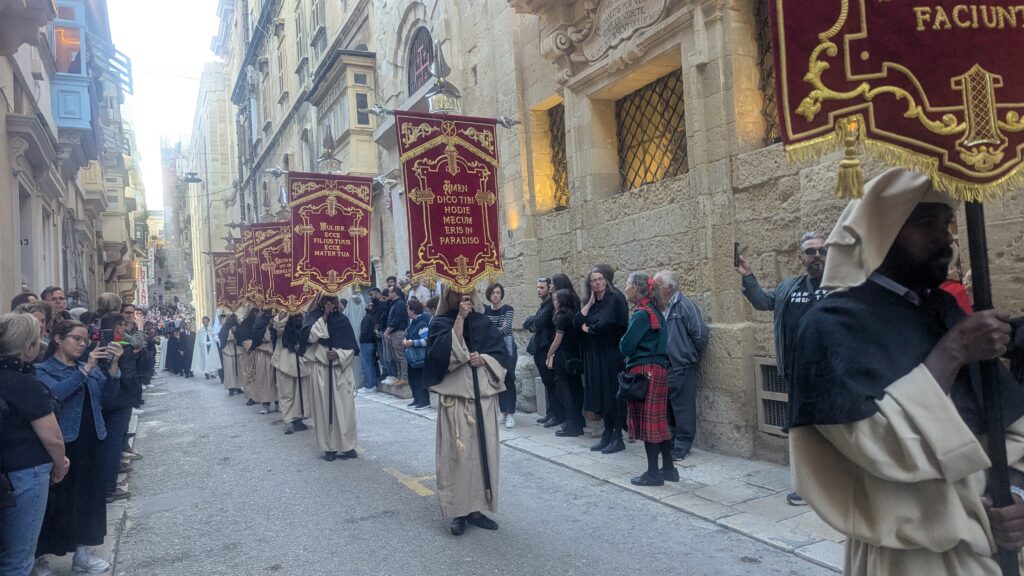
The next morning, I had time to visit the National Museum of Archeology before returning to the airport. What a wonderful museum, with exhibits from the neolithic to bronze age to Phoenician. It is in a great old palace, Auberge de Provençe. The grand salon is open and there are great murals on the ceilings. Definitely worth more than 5€ and, if I had been paying attention, I could have gotten a senior discount for 3.5€.
There was information about the hypogeum or Ħal Saflieni. Hypogeaum books up quickly as only 10 people can go each hour to this underground site. I could have easily purchased tickets when I booked my tour but really didn’t hear about it until about a month prior to my trip. Fully booked. I did try to get next day tickets at Fort Saint Elmo on Thursday but wasn’t early enough, either, missed it by 2 tickets!
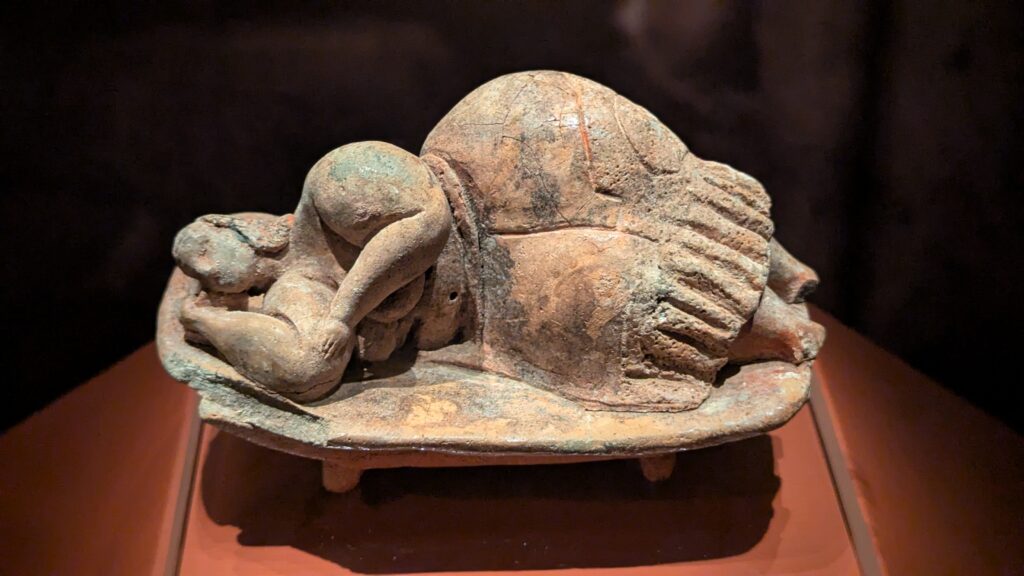
I took a Bolt back to the airport for the start of my Explore tour. We took a van to get to the ferry, then had to drive to our hotel in Marsalforn Bay across the island.
Gozo
We had the afternoon free after arriving in Marsalforn Bay in Gozo and I spent it wandering the city and enjoying the views. We had a meeting with our guide, Chantelle, and the 13 of us on the tour at 1900. The next two days were busy, we went all over the small island.
- We spent about two hours at the UNESCO World Heritage Site, Ggantija Archeology Park. The visitor center had some great exhibits, I could have spent a little longer there than we had with our group. Ggantija is a megalithic temple complex from the Neolithic era (c. 3600–2500 BC). These are the earliest of all of the megalithic temples on Malta. They are older than the pyramids of Egypt and thought to be the oldest free-standing structure in the world. It’s believed they are a ceremonial site used in a fertility rite.
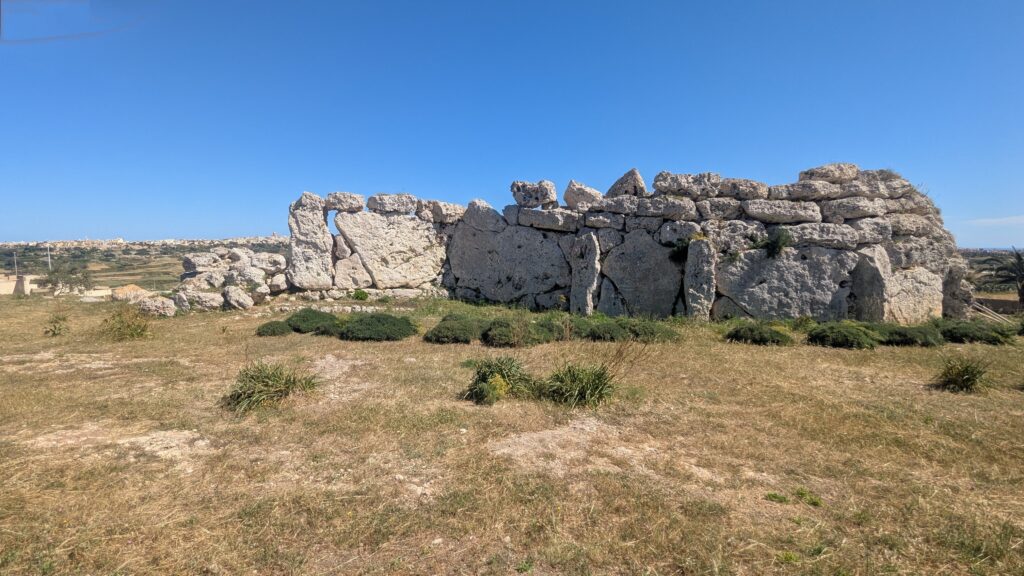
- We visited the beautiful bay of Xlendi (pronounced Shlendi). We hiked down to the bay, seeing many fossils in the ground and stopped to learn about some of the flora, including caper bushes. We had time for a boat trip to see all the caves and some watchtowers from the days of pirates, and more.
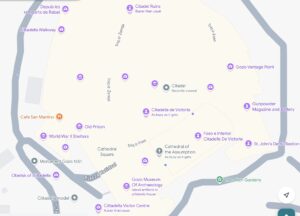
- We saw the Citadel (Cittadella) in the capital city of Rabat as it is known locally (the British called it Victoria). We arrived when Easter services and the procession were in progress at the Cathedral of the Assumption. We made visits to the prison, Gozo Nature Museum, the Gran Castelo House, the Gozo Museum of Archeology, and visited the walls. After lunch, and trying local gelato, we wandered the beautiful narrow streets of Rabat, seeing all the St. George signs, statues, flags.
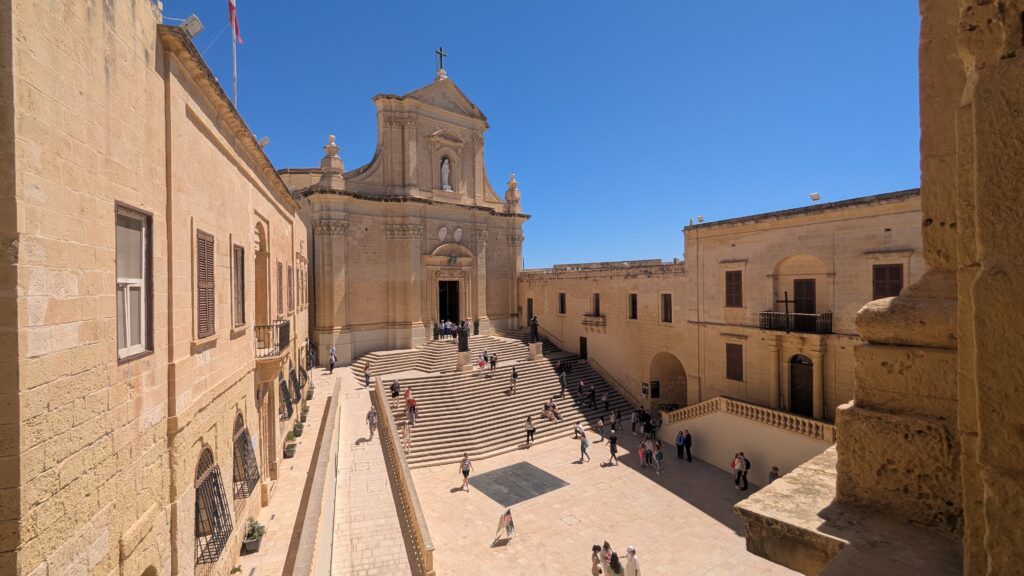
- We stopped for a quick visit to Calypsos Cave, alleged to be the cave referred to by Homer in The Odyssey.
- We ended the day at Ramla Bay. We were supposed to have time for a swim but the water was very cold so we just enjoyed wading in the clear blue water.
- We visited Dwejra Bay, on the west coast. It is known for its “inland sea”, a shallow inland lagoon linked to the sea by 30-meter tunnel. We paid for another boat ride to see the caves and gorgeous deep blue water. We saw the “face” in the rock, the “crocodile” on top of another cliff, Fungus Rock (where the Knights of St. John found a rare fungus prized for medicinal properties), the coral and fungus in the caves, the fossils in the rocks of the cliffs, and the site of the (former) Azure Window. It collapsed in 2017.
- Ta-Pinu National Shrine is only 100 years old, but built around a much older shrine. We initially arrived during mass so left and came back after our visit to Dwejra. The shrine is the site of reported miraculous cures and has been visited by 3 popes. There are beautiful mosaics inside and out.
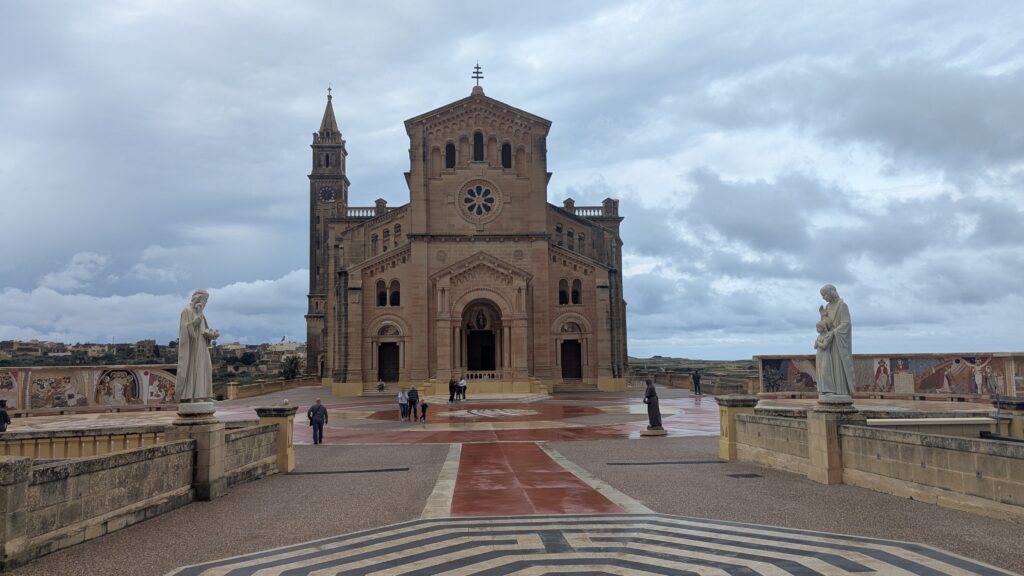
- The last day on Gozo we had a 5km walk along the cliffs from Zebbug, to Xwejni Bay, the Wied I-Ghasri Gorge, into Marsalforn Bay. Limestone cliffs, the ocean, the salt pans, this was a highlight of my visit, so beautiful.
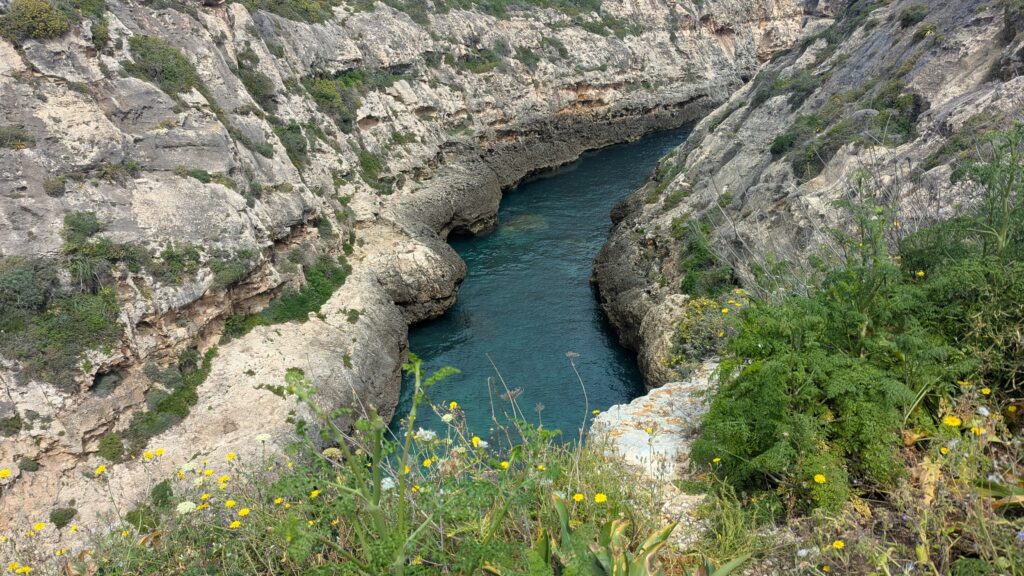
Malta
We stayed in Sliema. It is quite far from Valletta and Old Town but we were in a great hotel, the Plaza Regency, along the waterfront and promenade.
We spent the first morning back in Valletta, however, seeing Old Town. The entire city is a UNESCO World Heritage Site.
- We visited the incredible Saint John’s Co-Cathedral. Magnificent. Every inch of the walls, ceiling, altars, chapels are decorated. The floor is covered with the tombstones of over 500 knights of St. John’s that are buried here. We visited the crypt, sacristy, all the chapels, and saw the Caravaggio “Beheading of St John”.
- We made it to the Upper Barrakka Gardens for the noon cannon at the Saluting Battery. The gardens offers some of the best views of the Grand Harbour.
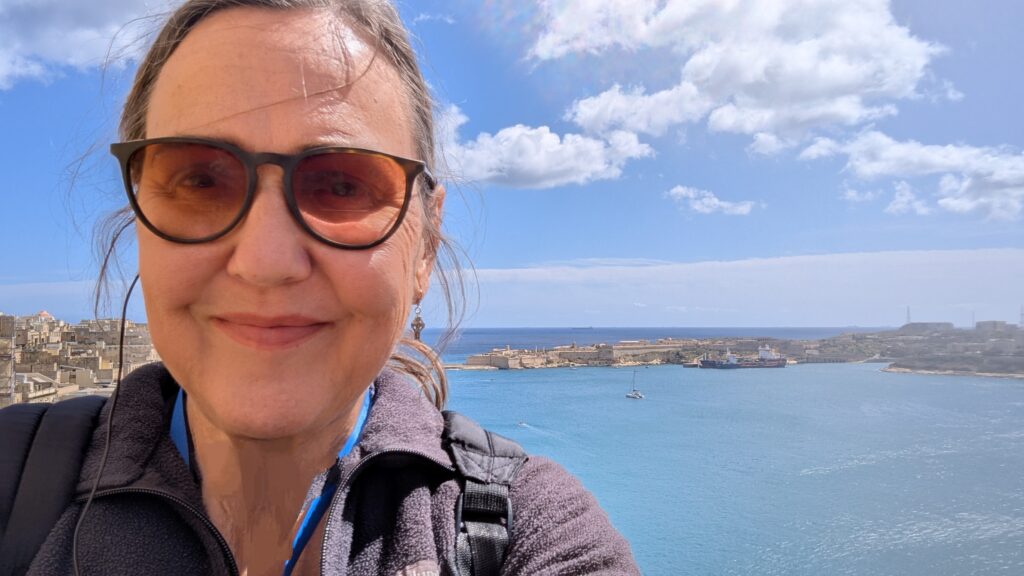
- I visited the Lascaris War Rooms. It was where the invasion of Sicily was planned (Operation Husky). This was the site of the British Army HQ, then the joint army, air force, navy command. It was bombed by the Italians and Germans, but never had a direct hit to cause a collapse of the tunnels. I read a lot about how important Malta was to the WWII North Africa campaigns, including the invasion of Tunisia and Libya, and the invasion of Sicily in Churchill’s WWII history books. Very interesting to be here in the war rooms where Eisenhower and Montgomery planned Husky. I came here for about 90 minutes while the rest of group visited National Archeology Museum (I saw that Saturday). I could have easily spent another hour but was meeting a few people and had to leave.
- The Grand Master’s Palace is on Republic Square. Over 450 years old, the palace is newly restored. It was originally constructed by the Knights of St. John and enlarged over the years. It was the Governor’s Palace during the British period. It is currently the President of Malta’s office. We saw the State Rooms, Throne Room, Ambassadors Room, and the huge armory, with some amazing armor of former Grand Masters. The paintings in the State Rooms depict the Great Siege of 1565.
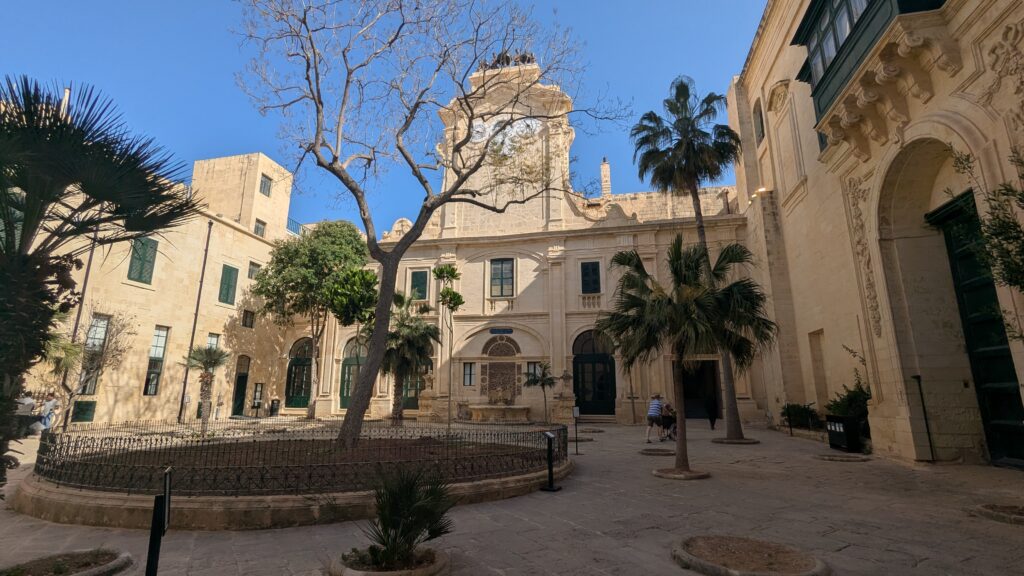
- We spent a day visiting the “Three Cities of Senglea, Vittoriosa and Cospicua”, considered to be ‘the cradle of Maltese history’. The Knights of the Order of Saint John settled in Vittoriosa in 1530 and used the city as their headquarters. We visited the Inquisitor’s Palace. Built around 1530 and first used by the Knights, then used for 224 years for the Inquisitors in Malta. Great building and interesting history. We also saw a restored Norman House.
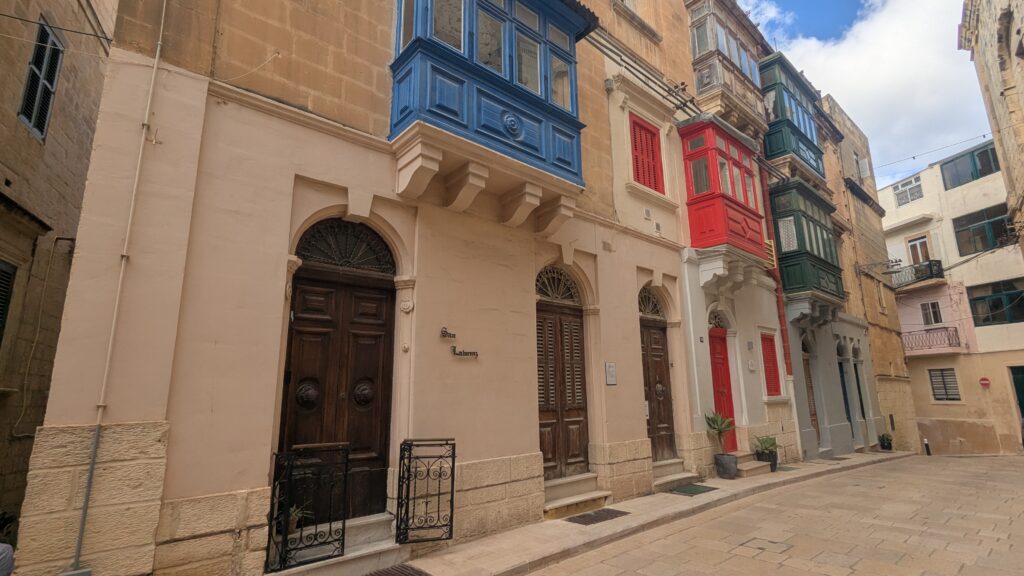
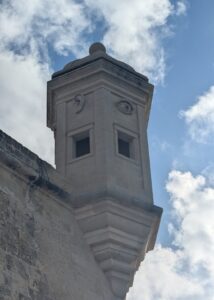
- The Gardjola Gardens offers wonderful views of the Grand Harbor. This area includes a great watchtower, Vedetta Watchtower, with “symbols of watchfulness”, a huge eye and ear. This area is site of some of Malta’s oldest fortifications protecting the harbor.
- Marsaxlokk is Malta’s largest fishing port. Marsa is harbor and xlokk (shlock) means south, so South Harbor. It is a beautiful little fishing village. I started with a visit to the church, Santwarju tal-Madonna ta’ Pompei or Our Lady of Pompei, then walked along the harbor. I saw the Fisherman statue, all the colorful boats. Most have the eye of Horus for protection.
- We had a 90 minute Grand Harbor cruise starting in Sliema. We had great views of the walls and forts, seeing Old Town, Fort St. Elmo, Fort St. Angelo, Upper and Lower Barrakka Gardens, very expensive yachts, naval ships, the Vedetta Watchtower, and a crane painted like giraffe.
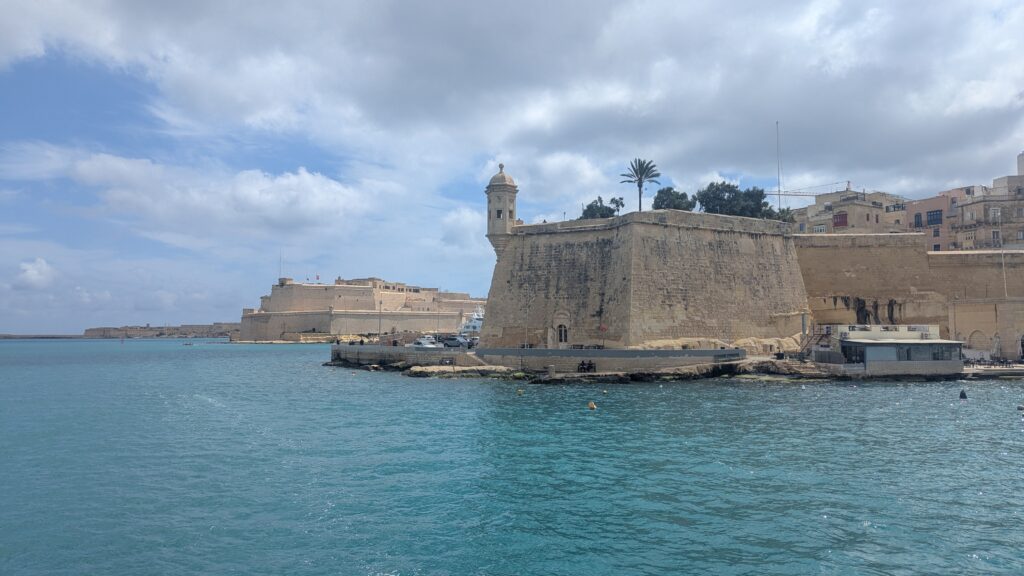
- Like Gganjita, Hagar Qim and Mnajdra are Megalithic temple complexes and part of the UNESCO World Heritage Site. These “Standing/Worshipping stones” are from 3600-3200 BCE. We visited both temples and enjoyed a walk along the cliff to get back to the visitor center, seeing the Congreve Memorial, the arch of Il-Ponta ta’ Rsejjen, and the Tal-Ħamrija Coastal Tower before returning to the visitor center. There is a lot to see in the visitor center and on the site. I would have liked more time to spend in the visitor center.
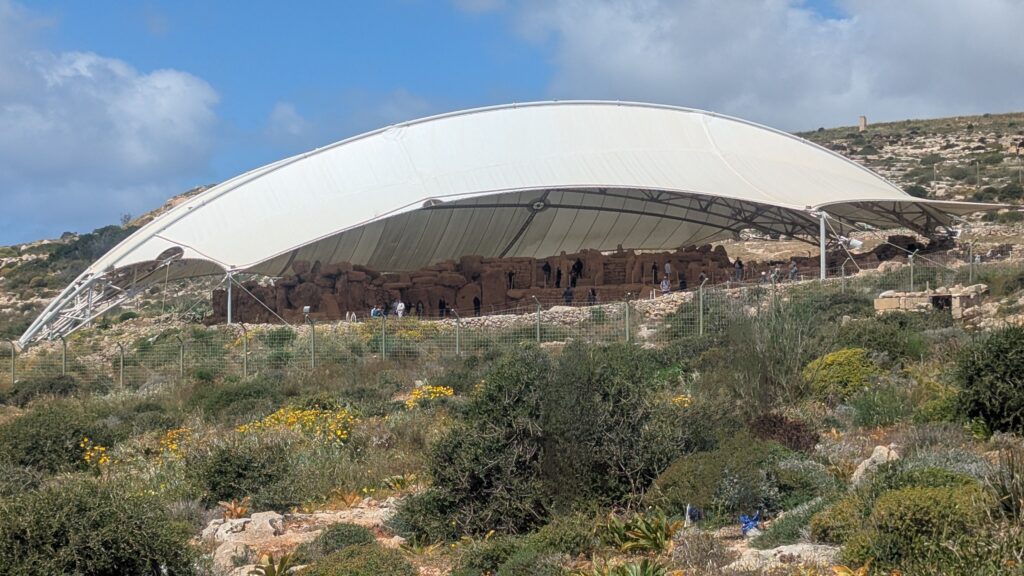
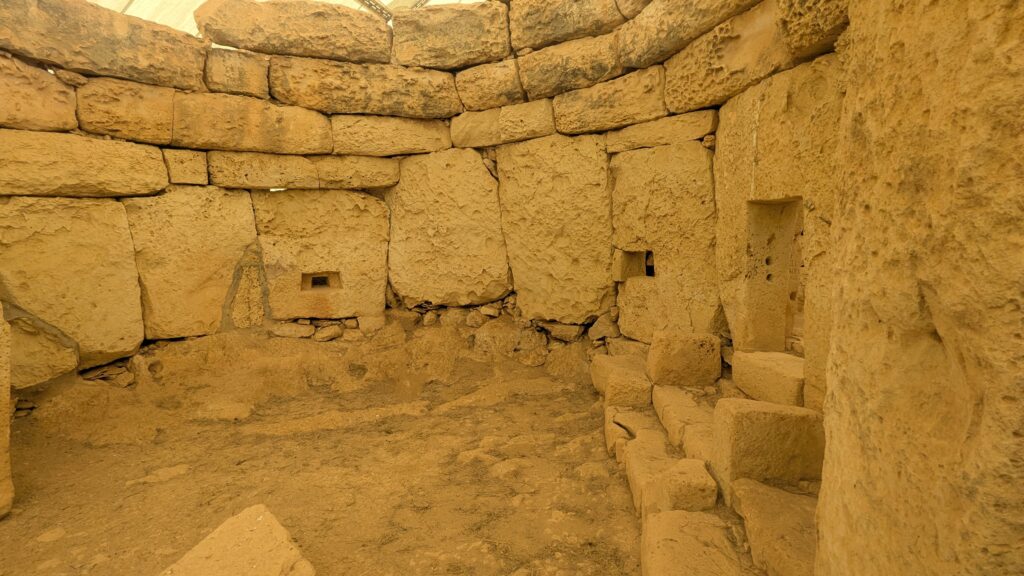
- Our fourth boat trip of the tour was the Blue Grotto to see the natural caverns, and glowing blue water from the white sand and corals and sea sponges. We stopped above for a great view of the arch before descending to the boats.
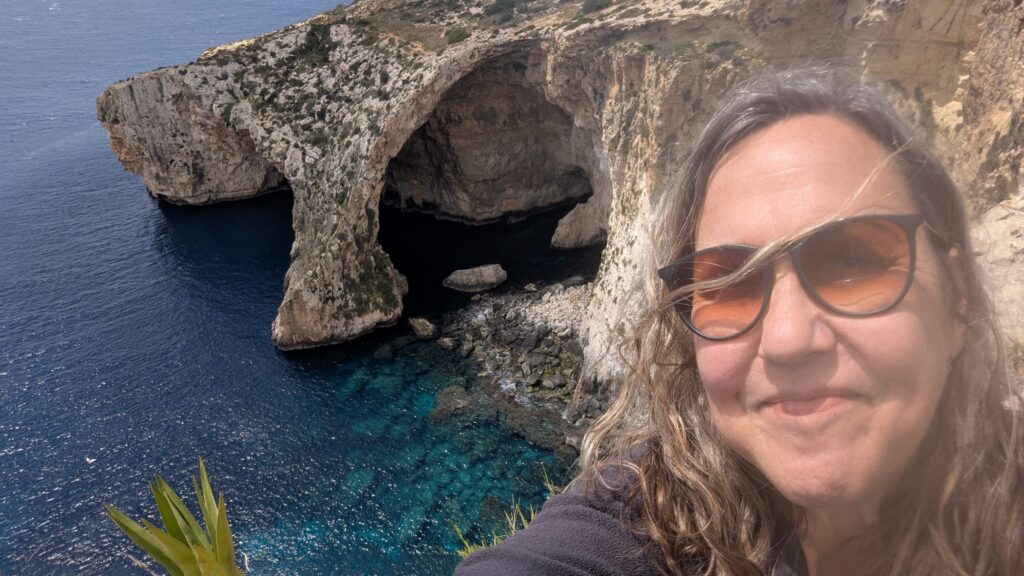
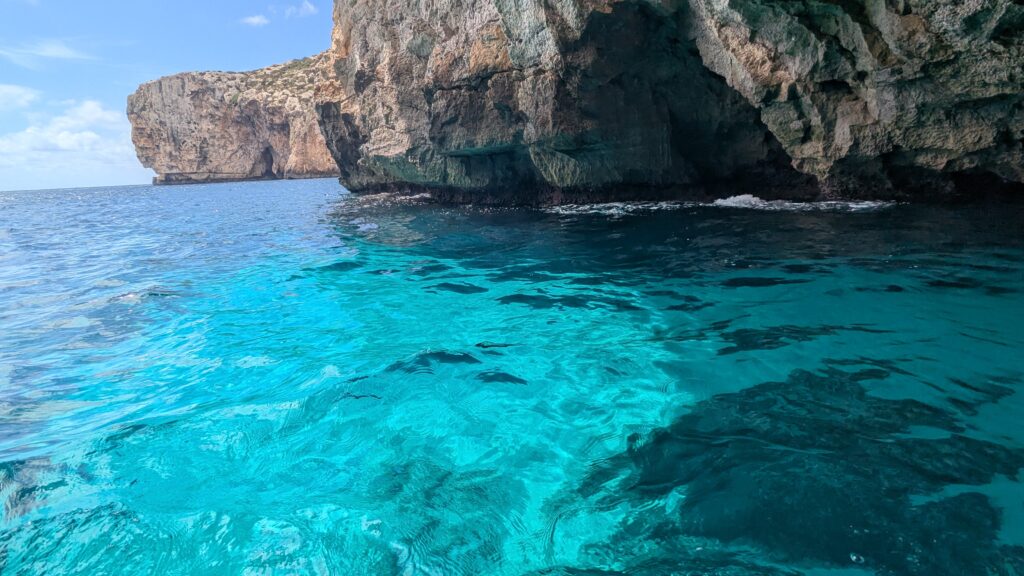
- The tour included a lunch at Malta Sunripe, which served their red and white wines, sundried tomatoes, pickled zucchini, and so much more. We had some excellent strawberries for dessert. We visited their wine cellar, heard about their farming practices, saw them finishing some canned preserves in their kitchen, then visited their greenhouses. I definitely recommend stopping by to purchase some of their delicious products.
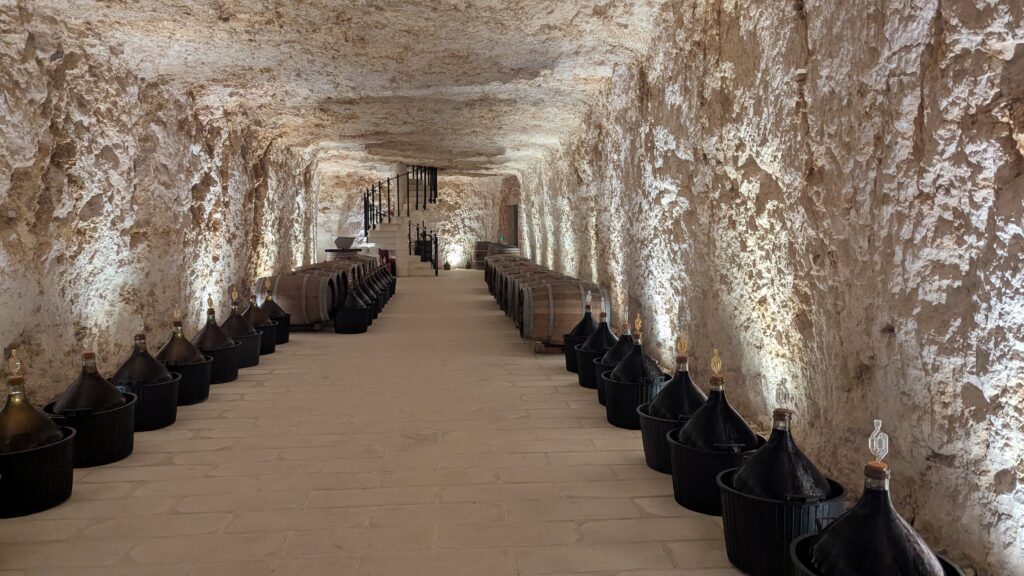
- Our last day we visited Malta’s Medieval old capital, Mdina. We spent about two hours walking around this beautifully preserved city with its narrow roads and alleys. This is another one of several places I would have enjoyed more time on our tour. There is a lot to see here, museums and churches and more.
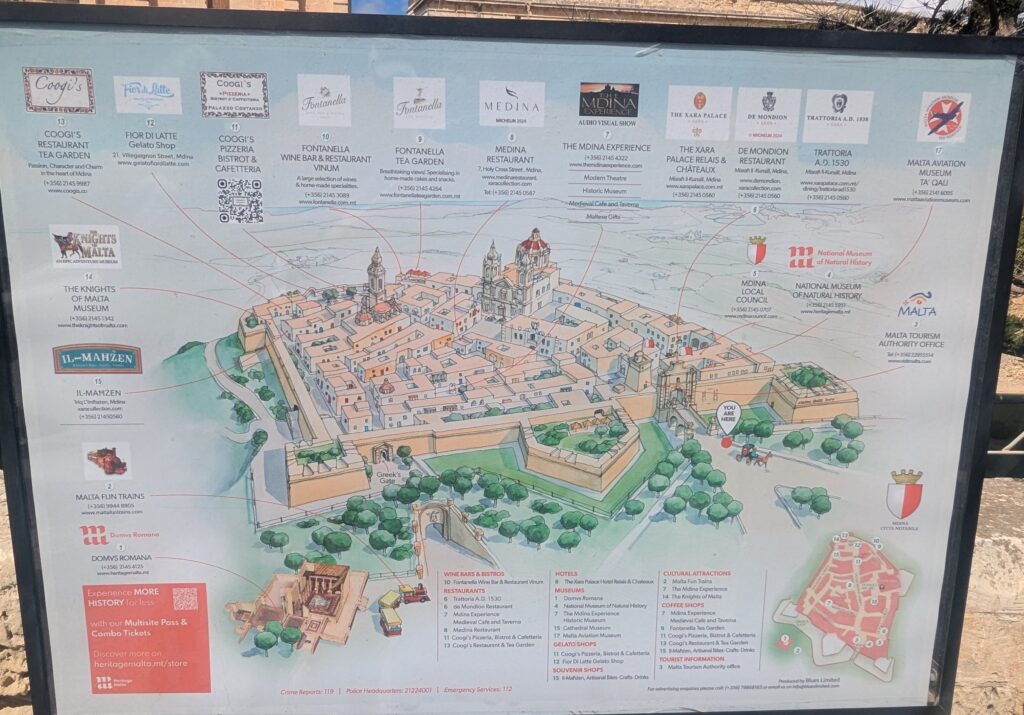
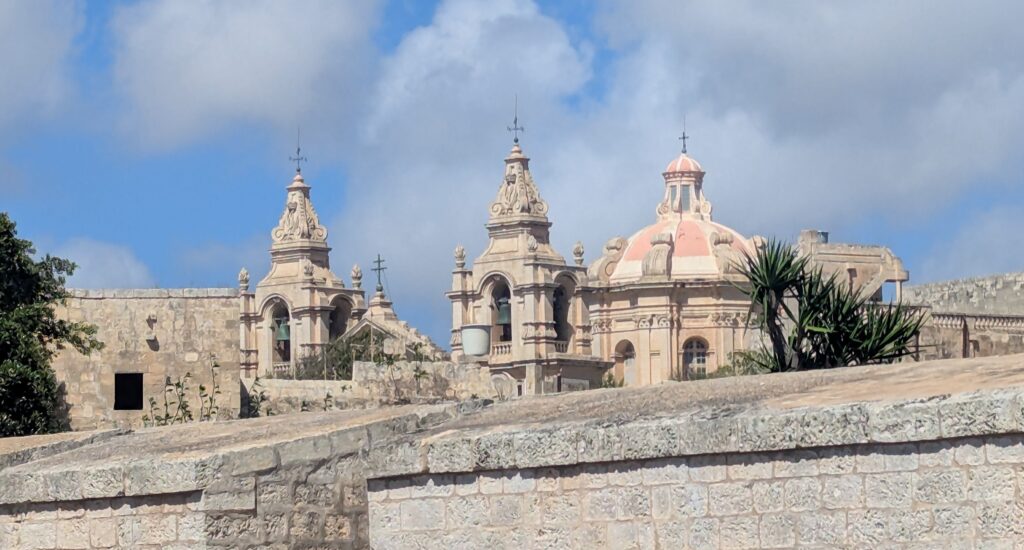
- I really enjoyed our visit to Domus Romana, a townhouse that belonged to Roman dignitaries. It has great mosaics, statues and other exhibits. It was discovered by accident in 1881.

- Saint Paul’s Catacombs was a very interesting visit. It has a good visitor center, we saw the largest catacomb then one with still identifiable menorahs and a very low chamber where we had to kneel to enter. Both Christian and Jewish burials here.
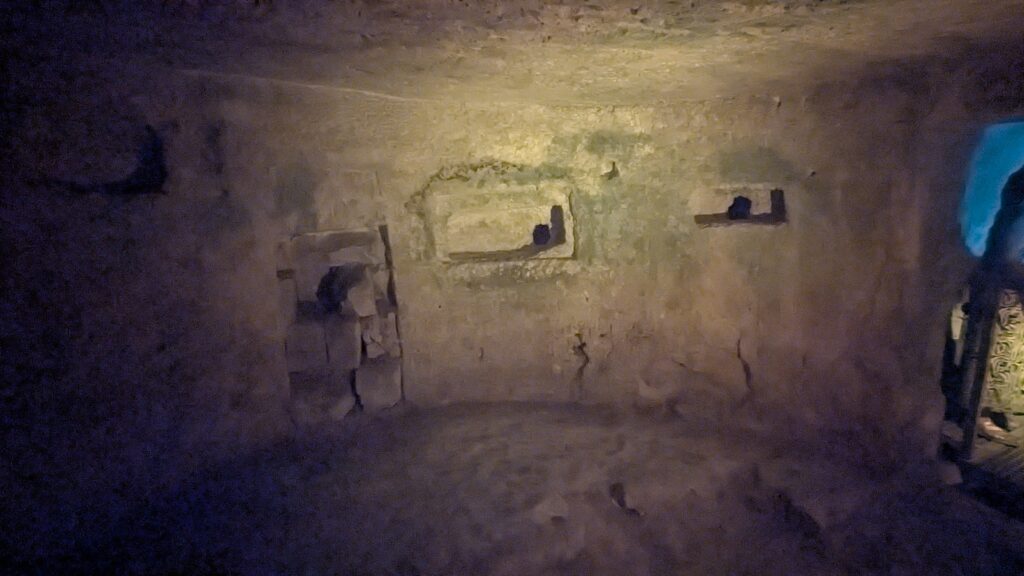
- Rotunda of Mosta or Sanctuary Basilica of the Assumption of Our Lady is the largest church on Malta. It was built between 1833 and 1860. The design is based on the Pantheon and the church has the third largest unsupported dome in the world. On 9 April 1942 a German bomb fell through the dome and into the church during Mass, but failed to explode. This is considered a miracle; there were 300 people in the church. There are photos of this, the damage and the bomb, a video reconstruction of the event, and a memorial with a replica of the bomb. I also visited the air raid shelter out front. Malta was under heavy attacks during WWII by the Germans and Italians.

- Our final stop was the San Anton Botanical Gardens. It was nice to relax here seeing the fountains and gardens after seeing the PM house.
Recommended Restaurants
- Gululu (Sliema)
- Saigon (Malta airport) – strange to recommend airport food but if you’re there waiting for a pickup, I was happy to see something besides bad American fast food (Burger King and KFC) and a bakery/sandwich place. Good selection, I enjoyed the Bang Bang Chicken.
- Malta Sunripe – see review above.
- 67 Kapitali (Valletta) – good selection of Lord Chambray local beer and wonderful charcuterie boards.
- Caffe Cordina (Valletta) – recommended on multiple sites, located on Republic Square. Many wonderful selections besides gelato.
- Gelateria Granola (multiple locations) – try the fig! I also had the salted caramel on a second visit. This is a Maltese chain and can be found in most cities.
- BoThai Restaurant (Marsalforn Bay, Gozo) – excellent green curry.
- Pebbles (Marsalforn Bay, Gozo) – on the waterfront, good burger.
- Peristyle Restaurant (Rabat) – good pasta and pizza. I had their fried ravioli. Large portions (even the half portion enough to share). Recommended by our guide as a local favorite, “away from the tourists”.
- Cuba (Sliema) – really good selection of burritos, salads and more.
- Gambit Bar and Bistro – just had a small appetizer (G Rok) after a late lunch but the people I was with enjoyed their pasta and the fish special of the day. Good service.
- Chocolate District – just around the corner from my hotel, excellent quality chocolate. I bought both the sea salt and the orange dark chocolate bars.
Other Restaurants
- Murella (Marsalforn Bay, Gozo)
- Piccolo Padre (Sliema) – went here with the entire group. Horrible service. We were waiting for food for over an hour, and they had multiple orders wrong. Food just average. Perhaps it would be okay with just a few people.
- Alka (Blue Grotto) – very friendly owner, good view but average food.
- Cafe Royal (Gozo) – good location in Rabat.
** All photos (except where indicated) property of Lisa, not to be copied or reproduced **
